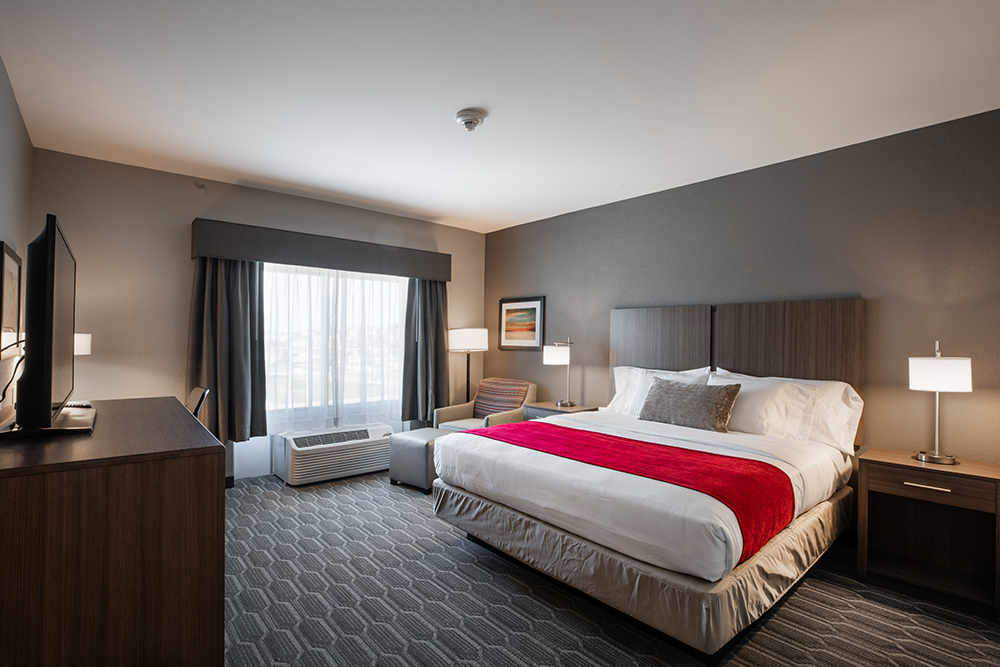How tariffs, labor are affecting development strategy
Hotel developers in the U.S. recognize that disruptors such as tariffs on goods and shortages of labor aren’t fading anytime soon, and some are faced with shifting investment strategies to make up for it.

REPORT FROM THE U.S.—Each development site has its own set of risks and rewards, and as disruptors such as labor challenges and tariffs remain on the horizon, hotel developers are tasked with assessing their current strategies.
Bruce Collins, regional director of development, east, at OTO Development, said as the cycle changes, his company will look at several opportunities, but its strategy of focusing on deals in high-barrier-to-entry markets isn’t changing much.
“But I think you’ll see us shift a little bit and put a little bit more of a focus on the acquisition side,” he said.
He said OTO recently acquired an unaffiliated hotel in Annapolis, Maryland, to reposition it and convert it into a Hilton Garden Inn.
But David Messersmith, director of hospitality at JMJ Development, knows that every development project is unique and there’s no magic formula for putting deals together. He said it’s just “as much art as it is science.”
And despite operating in a global economy with economic fluctuations affecting interest rates, international exchange rates or even the number of people traveling internationally, JMJ’s site selection process “hasn’t changed materially,” Messersmith said.
For example, JMJ developed the Rosewood Mayakoba 10 years ago* in Playa del Carmen, Mexico, on a 1,600-acre beachfront site, but also just put down a letter of intent for a 1-acre site in a major downtown market, he said.
“Whether 1 acre or 1,600 acres, we feel we can create value for our investors by securing the best site available and delivering a unique product that will enhance the experience for our guests,” Messersmith said. “This is our model.”
That model is not dependent on a cycle, he said. While some worry about another economic recession like the one seen in 2008, that down period provided “niche opportunities for successful hotel development.”
“It’s all about understanding the market,” he added. “And when I say market, I mean at the micro level.”
If developers can uncover the right opportunity and get the best site to deliver a unique product at a rate that is acceptable for that market, “that is not dependent on where we are in the cycle,” Messersmith said, because there will always be challenges whether it’s geographic, financial or legal.
“As a development firm, we have to look at each opportunity on its own and measure the risk versus reward,” he added.
Is now a good time to develop?
By no means is OTO going to halt or stop in any way, Collins said, but some developers might need to tweak their strategies a bit.
“As long as there’s deals to be done, which I don’t see that changing ever, we’ll continue to figure out how to do them,” he said.
Another way OTO has adjusted is in the way it approaches new-builds. He said his team is experimenting more with modular construction, which they did with a property in Chapel Hill, North Carolina.
“I think that will give us a little bit more certainty on some of our costs upfront and kind of eliminates those concerns about tariffs and labor shortages because we can do it with a smaller workforce,” he added.
Kevin Urgo, principal and managing partner, Urgo Hotels & Resorts, said in an email interview the rising cost of construction is the “most significant disruptor for our development efforts.”
That paired with a shortage of labor across development and hotel operations has led to big challenges in certain markets, he said, and his company slowed their “ground up development pipeline quite a bit in 2018.”
Urgo said he’s noticed that volatile capital markets have shown signs that lenders are pulling back and financing for development projects is becoming more challenging. But financing for renovations and repositions in “value-add scenarios is readily available thanks to the proliferation of debt funds.”
He said Urgo Hotels & Resorts, which primarily develops in major urban and in-fill locations through the U.S. and Canada, is taking a step back and considering alternative investment strategies such as acquiring and repositioning assets.
When stakes are high, he said his company looks at sites that consistently have good metrics for market performance, have a great location in the market with access to multiple demand generators and segments—commercial, government and leisure—along with “fairly straightforward development planning for easy execution.”
And for newer developers looking to enter the game now, Urgo said it’s smart to develop in markets where they have a meaningful track record and relationship with local lenders.
Urgo said in the short term his team will be developing in the New York metro area in “urban and in-fill locations” under premium select-service brands under the Marriott International, Hilton and InterContinental Hotels Group umbrellas.
“In all instances, these projects are in high-barrier-to-entry submarkets with great underlying hotel performance metrics over a period of five to 10 years,” he said.
The perfect site, according to Collins, is flat land with plenty of parking, which has all of the utilities right up to the front door and no zoning requirements to hurdle—but he knows that doesn’t exist.
So for OTO to be excited about a development site, Collins said it needs to be in a location where he knows there is demand.
“It might be either underserved with either not enough product or with older product that needs to be new,” he said.
He cited OTO’s development of a Courtyard by Marriott and a Hampton Inn & Suites in Santa Monica, California—which took more than seven years to secure the deal in order to build the hotels—as ones that really excited the company because they were the first new hotels the city saw “in 20-some odd years.”
Whether there’s light at the end of the tunnel with things like labor challenges, Collins said he isn’t sure, but the industry is going to “have to change the way it builds.”
This article originally appeared via Hotel News Now



